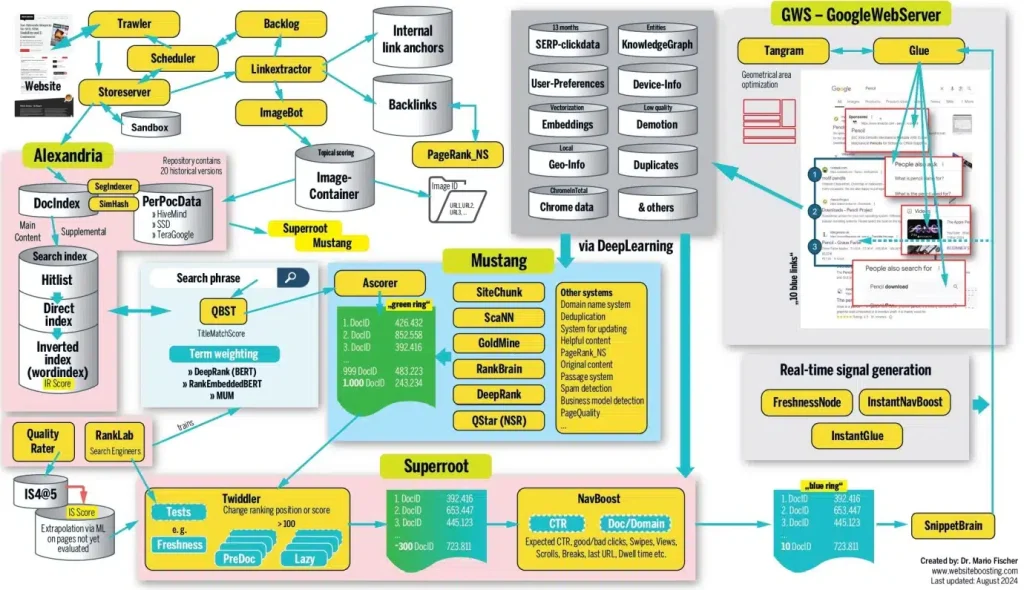by JCM | 27 Nov, 2025 |
If you’re happy with platitudinous banality for your “thought leadership”, GenAI is great!
The trouble is, this isn’t just a GenAI issue.
Many (most?) brands have been spewing out generic nonsense with their content marketing for as long as content marketing has been a thing.
Because what GenAI content is very good at exposing is something that those of us who’ve been working in content marketing for a long time have known since forever:
Coming up with genuinely original, compelling insights is *incredibly* hard.
Especially when the raw material most B2B marketers have to work with is the half-remembered received wisdom a distracted senior stakeholder has just tried to recall from their MBA days in response to a question about their business strategy that they’ve probably never even considered before.
And even more especially when these days many of those senior stakeholders are asking their PA to ask ChatGPT to come up with an answer for the question via email rather than speak with anyone.
If you want real insight that’s going to impress real experts, you need to put the work in, and give it some real thought.
GenAI can help with this – I have endless conversations with various bots to refine my thinking across dozens of projects.
But even that takes time. Often a hell of a lot of time.
Because even in the age of GenAI, it turns out the project management Time / Cost / Quality triangle still applies.
And you still only get to pick two.
{Post sparked by a post about how NotebookLM can now produce entire, quite decent-seeming slide decks, based on a few prompts)
by JCM | 28 Oct, 2025 |
“45% of the AI responses studied contained at least one significant issue, with 81% having some form of problem”
I’m a big fan of using GenAI to assist in research, ideation, and even sense-checking – asking it to help me with my own critical and lateral thinking. I use these tools multiple times a day, and am constantly encouraging the journalists I work with at Today Digital o use GenAI more to help them boost both their productivity and the impact of their work.
But it’s *vital* to keep fully aware of GenAI’s limitations when using it for anything where facts are important.
No matter how often we remind ourselves that LLMs have no true understanding, no real intelligence, no concept of what a “fact” actually is, the more you use them the easier it is to be taken in by their very, very convincing pastiche of true intelligence.
As this Reuters study shows, despite the apparent progress of the last couple of years, there are still fundamental challenges – which are unlikely to ever be fully overcome using this form of AI. (And which is why LLMs weren’t even classified as AI until very recently…)
The good news? With GenAI’s limitations increasingly becoming more widely appreciated, this could ultimately be a good thing for news orgs – because why go to an unreliable intermediary when you can go direct to the journalistic source?
Journalistic scepticism and fundamental critical thinking skills are becoming more important than ever.
by JCM | 24 Jul, 2025 |
The Tragedy of the Commons is coming for the internet:
Google’s AI Is Destroying Search, the Internet, and Your Brain
404 Media, 23 July 2025
The GenAI equivalent of Googlebombing (remember that?) was one of my first concerns when pondering the likely impact of GenAI search, way back when ChatGPT 3.5 came out and the prospect started looking real.
This kind of thing is, sadly, inevitable. And while Google’s got very solid experience of getting around attempts to manipulate its algorithms, it doesn’t have a great track record of releasing AI products that can distinguish facts from confabulations (remember both the Bard and the Gemini launches?).
The other inevitability is that this is also going to lead to more scammy marketing techniques. We’re going to be inundated with yet more of those snake oil salespeople popping up to promise brands results in GenAI, just as they used to in the early days of SEO – fuelled by similar tactics of vast networks of websites all interlinking to each other to create the impression of authority.
Only now, rather than using underpaid humans in content farms, they’ll be using GenAI to spit out infinite copy and infinite webpages, poisoning the GenAI well for everyone in pursuit of short-term profits.
by JCM | 21 Aug, 2024 |
 The default writing style of GenAI is becoming ever more prevalent on LinkedIn, both in posts and comments.
The default writing style of GenAI is becoming ever more prevalent on LinkedIn, both in posts and comments.
This GenAI standard copy has a rhythm that, because it’s becoming so common, is becoming increasingly noticeable.
Sometimes it’s really very obvious we’ve got bots talking to bots – especially on those AI-generated posts where LinkedIn tries to algorithmically flatter us by pretending we’re one of a select few experts invited to respond to a question.
???
Top tip: If you’re using LinkedIn to build a personal / professional brand, you really need a personality – a style or tone (and preferably ideas) of your own. If you sound the same as everyone else, you fade into the background noise.
So while it may be tempting to hit the “Rewrite with AI” button, or just paste a question into your Chatbot of choice, my advice: Don’t.
Or, at least, don’t without giving it some thought.
???
There are lots of good reasons to use AI to help with your writing – it’s an annoyingly good editor when used carefully, and can be a superb help for people working in their second language, or with neurodiverse needs. It can be helpful to spot ways to tighten arguments, and in suggesting additional points. But like any tool, it needs a bit of practice and skill to use well.
But seeing that this platform is about showing off professional skills, don’t use the default – that’s like turning up to a client presentation with a PowerPoint with no formatting.
Put a bit of effort in, and maybe you’ll get read and responded to by people, not just bots. And isn’t that the point of *social* media?
by JCM | 16 Aug, 2024 |
 This from John Hegarty resonated. Unpopular opinion, but awards – especially in B2B marketing – are the ad industry equivalent of social media vanity metrics. They may get you marginally more reach (usually long after the campaign’s over), but rarely with your real target audiences.
This from John Hegarty resonated. Unpopular opinion, but awards – especially in B2B marketing – are the ad industry equivalent of social media vanity metrics. They may get you marginally more reach (usually long after the campaign’s over), but rarely with your real target audiences.
What’s worse, the positive signals award wins send out can create feedback loops of groupthink about tactics that can actively harm your ability to deliver.
I know it’s tough to demonstrate marketing effectiveness, but award wins rarely prove much beyond that marketing people like something. So unless you’re selling to marketers, they don’t really have much value.
This means awards make perfect sense for agencies (and individuals) to enter – but for their clients? The point of marketing is to improve brand perception and make sales with your buyers, not getting a round of applause from other marketers.
Which is why, often, I find the less glamorous side of marketing is where the real businesses impact can be found.
by JCM | 15 Aug, 2024 |
There’s some fascinating stuff in this SEO long read, based on impressive research and analysis. Just bear in mind that, as leaked Google documents put it, “If you think you understand how [search algorithms] work, trust us: you don’t. We’re not sure that we do either.”
 To save you time, the main lesson is that “achieving a high ranking isn’t solely about having a great document or implementing the right SEO measures with high-quality content”. Search results shift in near realtime based on thousands of utterly opaque, interconnected assessments of obscure demand and user intent signals, so there’s only so much website managers can do.
To save you time, the main lesson is that “achieving a high ranking isn’t solely about having a great document or implementing the right SEO measures with high-quality content”. Search results shift in near realtime based on thousands of utterly opaque, interconnected assessments of obscure demand and user intent signals, so there’s only so much website managers can do.
For me, this all confirms a few core content principles:
? Context is king, not content. You can have an amazing page full of astounding insight, but if it doesn’t clearly meet the needs of the user at that moment in time, it will go unviewed.
?? Page structure is at least as important as substance – if (human and bot) audiences can’t quickly tell that your page is interesting and relevant, they’ll bounce.
? But don’t worry – the key to success is rarely going to be a single webpage. More important is the authority of the domain and brand.
? This means the impact of content is at least as much about cumulative brand building as it is immediate engagement. Think of the long tail, not just the short spike – and focus your content strategy on building this long-term growth over the short-term quick hit.
? Given so much about how this works is unknown, and so many factors are outside your control, it’s best not to over-think it. Follow all the advice SEO experts offer, and you’ll end up with something so over-engineered it’ll lose its coherence and flow. This will increase bounce rates.
???? So how to succeed? Go back to basics: Focus on ensuring your content fulfills a clear audience need (ideally currently unmet by other sources), using language audiences are looking for, presented in ways audiences are likely to engage with, and with clear links to and from other relevant content to help both humans and bots understand its relevance within the broader context.
? In other words, SEO may be complex when you dig into the details – but it’s really just a combination of common sense, long-term authority building, and a good bit of luck.
It’s still worth reading the whole thing, though.
by JCM | 1 Aug, 2024 |
 “When AI is mentioned, it tends to lower emotional trust, which in turn decreases purchase intentions.”
“When AI is mentioned, it tends to lower emotional trust, which in turn decreases purchase intentions.”
An interesting finding, this – especially as it transcends product and service categories – though perhaps to be expected at this stage of the GenAI hype cycle.
This kind of scepticism isn’t easy to overcome – with new technologies acceptance and mass adoption is often a matter of time – but as the authors of the study point out, the key issue to address is the lack of trust in AI as a technology.
Some of this lack of trust is due to lack of familiarity – natural language GenAI seems intuitive, but actually takes a lot of practice to get decent results.
Some will be due to the opposite – follow the likes of Gary Marcus, and it’s hard not to get sceptical about the sustainability, benefits, and reliability of the current approach to GenAI.
The danger, though, is that this scepticism may be spreading to AI as a whole. The prominence of GenAI in the current AI discourse is leading to different types of artificial intelligence becoming conflated in the popular imagination – even though, just a few years ago, the form of machine learning we now call GenAI wouldn’t even have been classified as artificial intelligence.
Tech terms can rapidly become toxic – think “web3”, “NFT”, and “metaverse”. Could GenAI be starting to experience a similar branding problem? And could this damage perception of other kinds of AI in the process?
by JCM | 1 Aug, 2024 |
 The decline in news audiences reported here – 43%, or 11 million daily views – is shockingly high. This follows Canada’s ill-considered battle with Meta, which led to Meta pulling news from its platforms, including Facebook, in the Canadian market last year, rather than arrange content licensing agreements with news publishers.
The decline in news audiences reported here – 43%, or 11 million daily views – is shockingly high. This follows Canada’s ill-considered battle with Meta, which led to Meta pulling news from its platforms, including Facebook, in the Canadian market last year, rather than arrange content licensing agreements with news publishers.
This amply demonstrates the vast power these tech platforms have in society and over the media industry, and so justifies the Canadian government’s worries. But it also more than shows – once again – how utterly dependent the online content ecosystem is on these channels for distribution.
Meta/Facebook obviously isn’t a monopoly, but a 43% decline in news consumption thanks to the shutting down of one set of distribution channels? It’s a safe bet that much of the rest of the traffic will be from Google, so it’s more of a duopoly.
What impact is this level of reliance on a couple of gatekeeping tech platforms – who can change their policies on a whim at any time – going to have on public awareness of current events and society at large
Elsewhere in the article we have an answer: “just 22 per cent of Canadians are aware a ban is in place”.
Shut down access to news, little wonder that awareness of news stories stays low.
Both Canada (with Meta) and Australia (with Google and Meta) have tried forcing the tech giants into doing licensing deals for content that their platforms promote. In both cases, this has – predictably – backfired, and led to the opposite effect to that intended.
But what’s the solution?
This question is becoming more urgent now that GenAI is in the mix, and starting to provide summaries of stories rather than just provide a headline, image, and link.
Meta/Google were effectively acting like a newsstand – showing passing punters a range of headlines to attract their attention and pull in an audience.
GenAI’s summarisation approach, meanwhile, is much closer to what Meta and Google were being (unfairly) accused of doing by the Canadian and Australian governments: Taking traffic away from news sites by providing an overview of the story on their own platforms.
But the GenAI Pandora’s Box has already been opened. Publishers need to move away from wishful thinking – the main cause of the failed Australian/Canadian experiments – and back to harsh reality.
Unlike the Meta news withdrawal – which could be reversed – this new threat to content distribution models isn’t going away.
by JCM | 31 Jul, 2024 |
 “If your website is referenced in a Perplexity search result where the company earns advertising revenue, you’ll be eligible for revenue share.”
“If your website is referenced in a Perplexity search result where the company earns advertising revenue, you’ll be eligible for revenue share.”
How many qualifiers can be fitted into one sentence, all while providing next to no information?
To be clear, I’ve loved Wordpress ever since I migrated my old blog to it [checks archives] *18* years ago [damn…] I also fully get why they’re doing this – some money is better than none, it may work out, and it may actually lead to more traffic / engagement / visibility for Wordpress sites.
But this all feels a little like promises of scraps falling from the table of people who are getting scraps falling from an even higher table.
Perplexity currently claims to be making US$20 million from paid subscriptions to its pro service – about the only source of income it currently seems to have, despite its $2.5-3 billion valuation. If they’re now giving away some of that limited income, I can’t see an obvious path to profitability, given the hefty running costs of GenAI.
This doesn’t just go for Perplexity, but for all these GenAI tools:
1?? What’s the path to a sustainable content publishing-based business model (and all these GenAI companies are content companies) when being able to produce infinite content on demand means the traditional route for making money for these kinds of companies – advertising inventory – is also infinite?
2?? Value comes from scarcity. Content / as inventory is no longer scarce. How do you make something that’s not scarce seem valuable enough to get people to pay for it?
3?? And when all GenAI models offer more or less the same output, and more or less the same level of reliability, and successful features and approaches can be replicated by the competition in next to no time, how do you stand out from the crowd?
Being a content/tech geek I’ve been thinking about this a lot over the last couple of years. Perplexity’s approach is one I like (I did history at university, so I love a good list of sources, even if they’ve mostly just been added to make your work look more credible and most of them are irrelevant, as is often the case with Perplexity) – but I’m far from convinced it has money-making potential. As Wired has put it, Perplexity is a bullshit machine. How valuable is bullshit?
Basically, we’re firmly in the destruction phase of creative destruction. The creative part is yet to come
But still – at least the providers of the raw material these LLMs are so reliant on are starting to get thrown a few bones. That’s a step in the right direction – because as that recent Nature study made clear, the proliferation of AI-generated content risks surprisingly rapid synthetic data-induced model collapse.
Human-created content may no longer be king, but it remains vitally important. Without it – and a hefty dose of critical thinking – the whole system comes tumbling down.
by JCM | 29 Jun, 2020 |
The most surprising thing with this growing move away from social media advertising is that it has taken this long for brands to realise that they can’t control the context in which their adverts appear – and that context can change perception of their messaging.
The real lesson here is not that social media needs stricter controls (an ethical debate), it’s that in the classic Paid/Earned/Owned model, the *only* part brands can fully control is Owned. Many are only now beginning to wake up to the fact that their social accounts are not Owned platforms.
All this should have been obvious for years – every fresh story about an algorithm change destroying business models that were relying on social audiences has been an alarm bell. But perhaps now brands are finally realising that social isn’t as straightforward as they’ve long seemed to believe.
What does this mean for brands?
1) They need more robust, nuanced social strategies. Chucking money at paid posts and adverts doesn’t cut it. It never has.
2) The quality of their genuinely Owned platforms is becoming more important than ever. These are the only places they have complete control over the context and the message.
And it’s also notable that many brands joining the boycott have solid Owned strategies in place…

 The default writing style of GenAI is becoming ever more prevalent on
The default writing style of GenAI is becoming ever more prevalent on  This from John Hegarty
This from John Hegarty To save you time, the main lesson is that “achieving a high ranking isn’t solely about having a great document or implementing the right SEO measures with high-quality content”. Search results shift in near realtime based on thousands of utterly opaque, interconnected assessments of obscure demand and user intent signals, so there’s only so much website managers can do.
To save you time, the main lesson is that “achieving a high ranking isn’t solely about having a great document or implementing the right SEO measures with high-quality content”. Search results shift in near realtime based on thousands of utterly opaque, interconnected assessments of obscure demand and user intent signals, so there’s only so much website managers can do. “When AI is mentioned, it tends to lower emotional trust, which in turn decreases purchase intentions.”
“When AI is mentioned, it tends to lower emotional trust, which in turn decreases purchase intentions.” The decline in news audiences
The decline in news audiences “If your website is referenced in a Perplexity search result where the company earns advertising revenue, you’ll be eligible for revenue share.”
“If your website is referenced in a Perplexity search result where the company earns advertising revenue, you’ll be eligible for revenue share.”